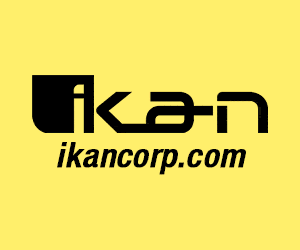FCC proposes voluntary approach to ATSC 3.0 transition, eliminating simulcast requirements

Subscribe to NCS for the latest news, project case studies and product announcements in broadcast technology, creative design and engineering delivered to your inbox.
The Federal Communications Commission is advancing a framework that would eliminate mandatory simulcasting requirements for television broadcasters adopting the ATSC 3.0 standard, according to a notice of proposed rulemaking circulated ahead of the commission’s October 28 meeting.
The document outlines a voluntary, market-driven approach to transitioning from the current ATSC 1.0 broadcast standard to ATSC 3.0, commonly marketed as NextGen TV.
Unlike previous digital television transitions, the proposal would allow individual stations to determine when, and whether, to discontinue legacy 1.0 broadcasts.
“We propose to permit stations to continue to voluntarily transition from a 1.0 signal to a 3.0 signal while giving them greater freedom to serve the specific needs of their local markets,” the document stated. The commission tentatively concludes that simulcasting should remain permissible but not compulsory, with the agency eliminating the current requirement that programming on both formats be “substantially similar.”
The proposal addresses persistent technical and economic tensions that have characterized the ATSC 3.0 rollout since the commission authorized permissive use of the standard in 2017. Broadcasters have deployed 3.0 service in more than 90 markets covering approximately 70 percent of the U.S. population, but capacity constraints imposed by simultaneous 1.0 and 3.0 transmissions have limited implementation of advanced features including ultra-high-definition video, immersive audio and mobile reception capabilities.
According to the National Association of Broadcasters, which filed a petition requesting an accelerated transition timeline in February 2025, the dual-transmission requirement forces stations to allocate bandwidth between formats.
“Broadcasters are forced to split their finite spectrum between the two standards, limiting the bandwidth available for ATSC 3.0’s most advanced capabilities,” NAB’s petition stated.
The commission’s approach differs markedly from NAB’s request for mandatory transition deadlines — February 2028 for stations in the top 55 markets and February 2030 for remaining markets.
The FCC proposes eliminating regulatory barriers while maintaining broadcaster discretion regarding conversion timing, likely creating a rocky road ahead for the format and transition.
Several unresolved technical and policy matters complicate the transition path.
The document devotes substantial attention to digital rights management encryption, which has rendered broadcast signals inaccessible on certain consumer devices despite those products carrying NextGen TV certification logos. The commission questions whether encrypted broadcasts meet the Communications Act’s definition of “broadcasting” as content “intended to be received by the public.”
“We seek comment on whether the current 3.0 encryption regime, as administered by A3SA and implemented by broadcasters, constitutes ‘broadcasting’ within the meaning of the Communications Act,” the notice stated, referring to the ATSC 3.0 Security Authority, a private entity managing broadcaster DRM and signal signing programs.
Multiple consumer comments filed in the docket express frustration regarding the incompatibility between encryption systems and previously purchased reception equipment.
The A3SA, founded by ABC, CBS, Fox, NBCUniversal and Univision, requires both broadcasters and device manufacturers to obtain licenses to encrypt or decrypt content, with annual costs ranging from $1,000 to $2,000 for stations depending on market size. The document does not specify manufacturer costs but notes concerns that certification requirements may restrict market entry.
The commission seeks comment on whether to mandate that television receivers include ATSC 3.0 tuners, drawing comparison to the 2002 requirement that all TV sets include digital television tuners.
Consumer Technology Association, which administers the NextGen TV certification program, argues marketplace demand obviates regulatory intervention, stating that by 2028 more than half of TV sets sold annually will include 3.0 tuners absent commission action. NAB contends a mandate is necessary to overcome a coordination problem between manufacturers, broadcasters and consumers.
Implementation questions extend to multichannel video programming distributors.
Current rules permit mandatory carriage only of ATSC 1.0 signals, meaning stations operating exclusively in 3.0 format cannot assert must-carry rights. The commission seeks comment on whether to extend carriage obligations to ATSC 3.0 transmissions, noting NCTA – The Internet & Television Association’s position that such requirements would impose “formidable technical challenges” and potentially unconstitutional burdens on cable operators.
NCTA states that redistributing 3.0 signals would require MVPDs to purchase and install new transcoders, receivers, demultiplexers and demodulators, though the organization does not provide cost estimates in materials cited by the commission. The document indicates ATSC has not completed work on recommended practices for 3.0 signal redistribution, contributing to uncertainty regarding technical requirements and associated expenses.
The proposal addresses accessibility requirements, with advocacy organizations including the American Council of the Blind and National Association of the Deaf asserting that ATSC 3.0’s capabilities — multiple audio tracks, customizable caption placement and sign language integration—should be mandated rather than optional. “Simply assuming that existing ATSC 1.0 rules will carry over without issue ignores the real-world challenges faced by consumers who rely on closed captioning and other access features,” commented from TDIforAccess and affiliated groups state.
Economic considerations underpin multiple aspects of the proceeding.
Approximately 14 million ATSC 3.0-capable television sets and 300,000 external converters had sold through 2024, according to the Future of Television Initiative report cited in the document. The commission seeks comment on funding mechanisms to offset consumer equipment costs, noting congressional action would be required to establish subsidy programs comparable to the DTV coupon program implemented during the previous digital television transition.
The notice includes an initial regulatory flexibility analysis examining potential impacts on small television stations, equipment manufacturers and MVPDs, requesting specific information regarding compliance costs. The document notes that 94.68 percent of full-power commercial television stations qualify as small entities under Small Business Administration standards, as do all noncommercial, Class A, low-power television and TV translator stations.
Chairman Brendan Carr signaled support for accelerating the transition in an October 6 blog post, stating the commission would “take steps to accelerate the transition to this NextGen TV standard” and describing ATSC 3.0 as “the future of broadcasting.”
Public comment deadlines have not been announced but will be established 60 days after Federal Register publication for initial comments and 90 days for replies. The commission requests information on multiple technical, economic and policy questions, including whether minimum broadcast service requirements should specify what portion of spectrum must be devoted to free over-the-air programming as opposed to datacasting or other services enabled by ATSC 3.0’s internet protocol architecture.
The proceeding does not propose specific transition deadlines or mandatory conversion requirements, instead seeking comment on “whether there should be an eventual sunset of 1.0 broadcasting and if so whether the sunset of 1.0 should be tied to a date certain or specific market conditions.”
This approach leaves resolution of fundamental transition structure questions to future rulemakings dependent on comment analysis.
Subscribe to NCS for the latest news, project case studies and product announcements in broadcast technology, creative design and engineering delivered to your inbox.





tags
A3SA, ATSC, Brendan Carr, Consumer Technology Association, Deregulation, FCC, NAB, NCTA, NextGen TV ATSC 3.0
categories
Broadcast Business News, Broadcast Engineering, Heroes, NextGen TV, Policy